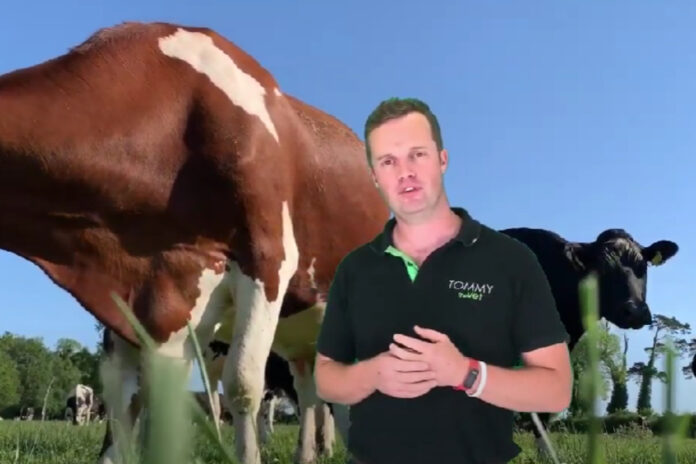Colostrum, feeding, hygiene, fresh air, calf comfort and space are the cornerstones of successful calf rearing, renowned vet, Tommy Heffernan believes.
During his recent ‘Being Brilliant at the Basics Winter Calf Health’ webinar 2023, ‘Tommy the Vet’, outlined why farmers should focus on these six key areas of calf health.
In a previous article, That’s Farming, summarised the veterinary consultant’s advice on colostrum and feeding, which you can read via this link, while this post focused on calf hygiene and this article is on fresh air/ventilation.
Calf comfort
For the purpose of this news article, we will focus on calf comfort, an aspect which carries the main message of “what is good for the calf is good for the farmer and good for the consumer”.
Heffernan said that farmers must remember that calves are monogastric for the first 3-4 weeks, so they “really value” high-quality replacer or whole milk because of its amino acid profile for growth.
He explained that they are not as prone to cold as they develop their rumen.
Nesting scores and temperatures
The vet continued: “They love a dry, warm lie, so nesting scores are something that people talk about.”
“That is when you see a calf lying down, and we cannot see their elbows in the straw; it is right up around them, so they can nest in straw.”
“Cold is probably a big one in the Irish systems for calves because a calf likes a normal temperature of between 10-15 degrees Celsius. If the temperature drops below freezing, that puts huge metabolic pressure on the calf.”
He said in this case, the calf is using up energy to stay warm, and if a calf gets cold, their immune system is comprised. Also, viruses and pathogens like colder temperatures, for multiplication, which is why we see more disease issues during the winter period.
Key message
He said the key factors in respect of calf comfort are warmth, adequate quantities of straw (the ultimate insulator), sufficient space and eliminating negative experiences to create positive experiences for calves.
He continued: “We see hopper balls being hung up and things for calves to stimulate and play with in pens.”
“That is something that we are going to hear more about as we understand calf behaviour as they are social creatures.”
“Anything that we can do to optimise behaviours in a system, we are going to have healthier calves,” he added.





